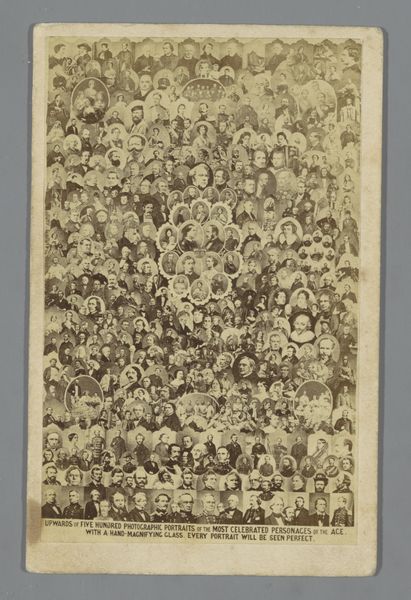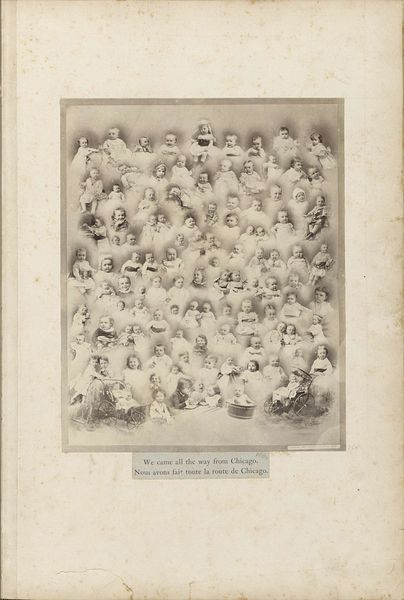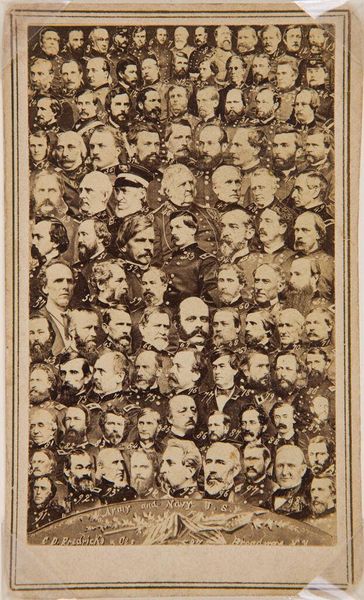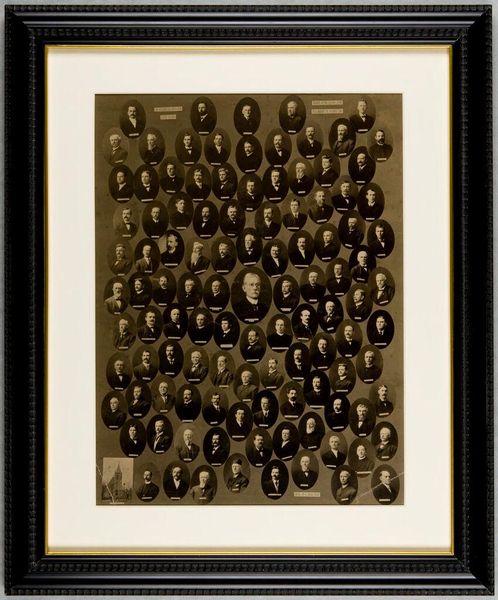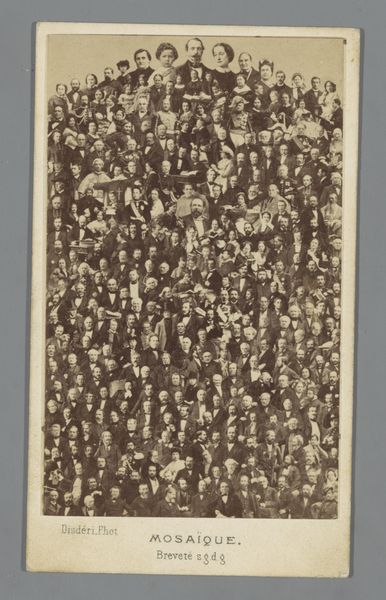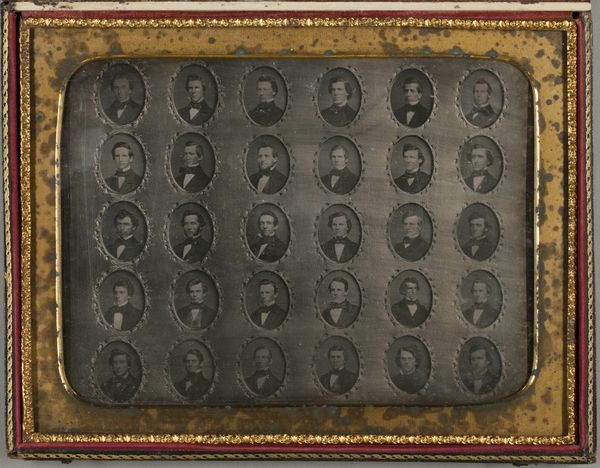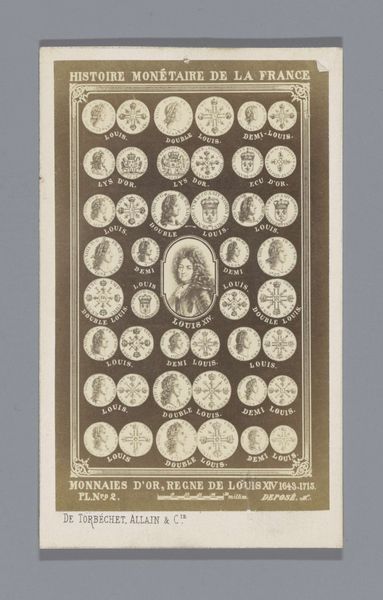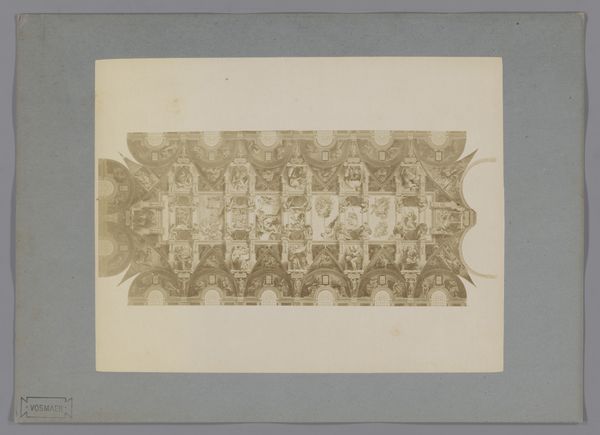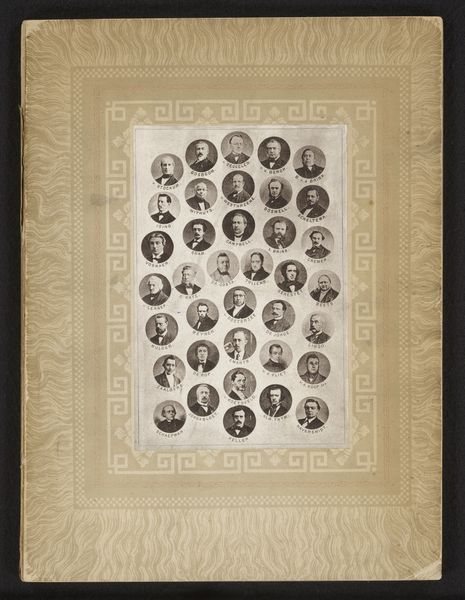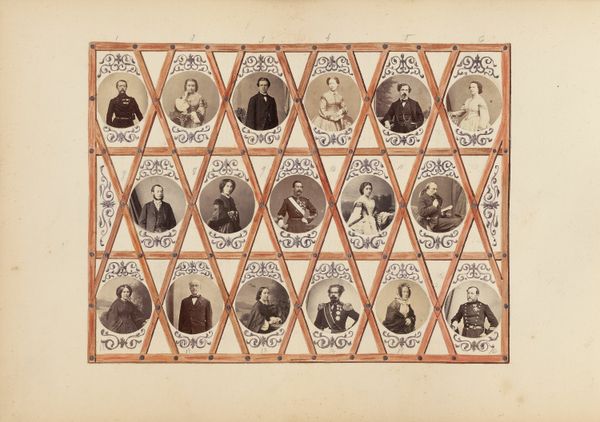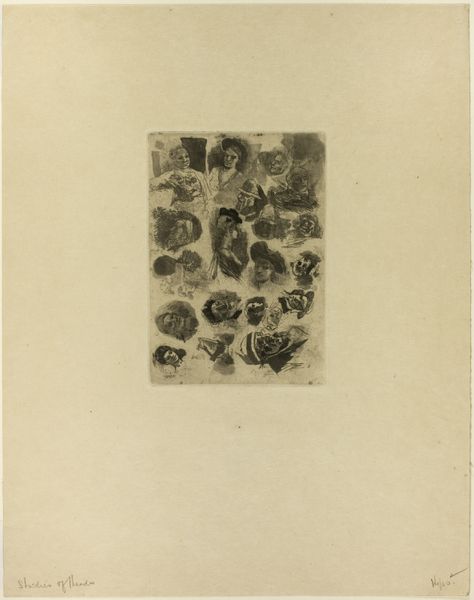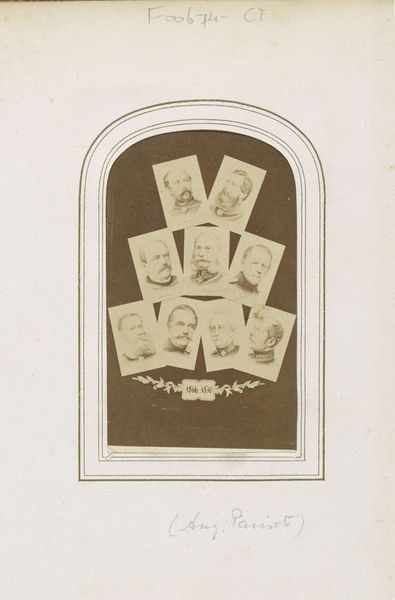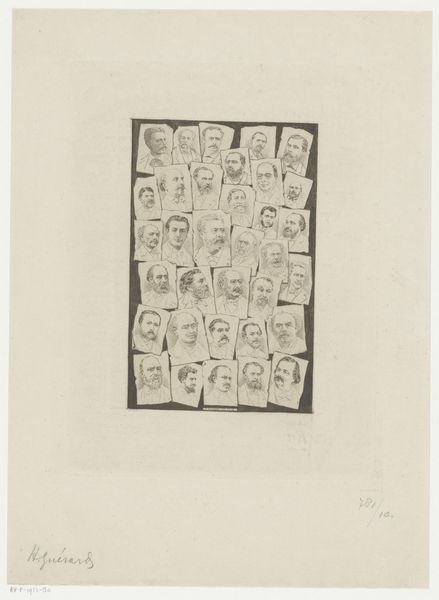
Verzameling (mozaïek) van koppen van Duitse (Pruisische) militairen ten tijde van de Frans-Duitse oorlog ('TYPES / DE SOLDATS / ALLEMANDS (...) 1870. LES PRUSSIENS EN FRANCE. 1871') c. 1870 - 1871
0:00
0:00
print, photography
#
portrait
# print
#
photography
#
group-portraits
#
genre-painting
#
history-painting
#
realism
Dimensions: height 92 mm, width 59 mm
Copyright: Rijks Museum: Open Domain
Editor: Here we have "Verzameling (mozaïek) van koppen van Duitse (Pruisische) militairen ten tijde van de Frans-Duitse oorlog ('TYPES / DE SOLDATS / ALLEMANDS (...) 1870. LES PRUSSIENS EN FRANCE. 1871')" by Frantz, made around 1870-1871. It appears to be a photographic print. What strikes me is the sheer number of faces, all these Prussian soldiers, presented almost like a collection of specimens. How do you interpret this work? Curator: I see this as a potent visual statement about the nature of conflict and identity. Look closely at how these men are arranged. The mosaic effect is deliberate. It evokes the feeling of both individuality and collectivity—the soldier as an individual, yet also a part of a larger, formidable war machine. The French inscription hints at a power dynamic. What does this visual categorization of the German army signify, especially in the context of war and occupation? Editor: So, it's less about individual portraits and more about representing a type? The text separating artillery from infantry supports that. Curator: Precisely! These are archetypes more than individual portraits. Their stern expressions, the regimented rows, speak to a collective identity forged in a specific historical and political crucible. Consider the use of photography here. This medium lent itself to a sense of realism. However, through repetition, this realism becomes something almost abstract, symbolic. Doesn't that impersonal categorization tell us something about how the French viewed their invaders? Editor: It does make it feel distant, like a collection of…occupiers. Seeing them categorized this way is dehumanizing in a strange way. Curator: Dehumanizing, yes, but perhaps also a way to grapple with the overwhelming reality of the occupation. Remember that symbols evolve, but the power of images to shape understanding, to cement cultural memory, remains constant. Editor: I never thought of photographic portraiture being used in this way, creating distance through documentation and display. Curator: It’s a reminder that even in what we perceive as objective media, powerful cultural and emotional messages are always being encoded and transmitted.
Comments
No comments
Be the first to comment and join the conversation on the ultimate creative platform.
